Here's a scan of a stripped MIFARE Ultralight smart card

That's some plastic film with (I assume aluminum) foil wiring acting as the antenna for both powering the chip and providing radio communications.
Two things look suspicious.
First, there's a wide stripe on the right (pointed to by the arrow) - a wide carefully engineered stripe of metal not connected to anything.
Second, note what happens between points A and B which I connected with a dotted line. There's a metal stripe going from B leftwards to the card perimeter, then downwards to the end of the "tunnel" crossing the wires and that end of the tunnel is also connected to the stripe that goes to point A. So it looks like the stripe from the "tunnel" end to point B can be eliminated by simply connecting points A and B and thus saving some metal.
Why are these two seemingly useless elements of wiring present in the circuit?
